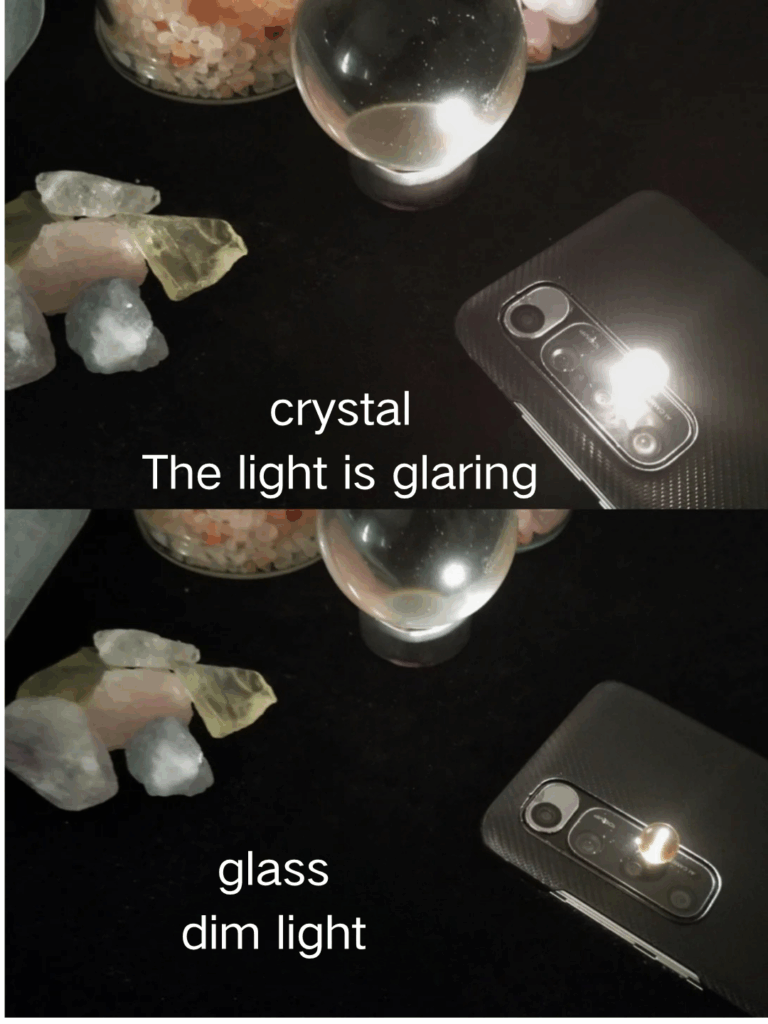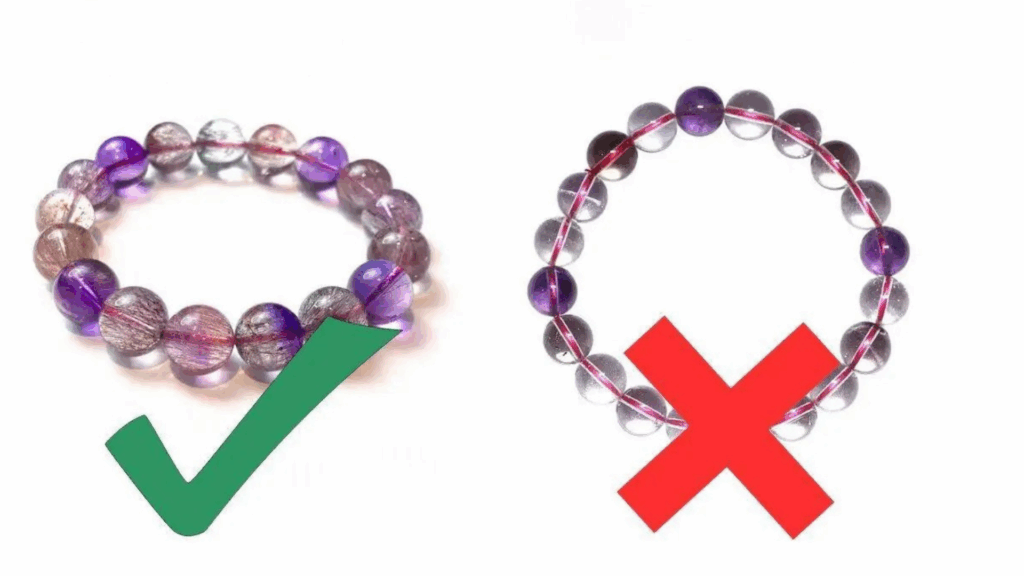🔦 1、 Mobile phone flash transparency method
Place the crystal on the phone flash and observe:
True crystal: After the light penetrates, the overall brightness is like a light bulb, and dark crystals (such as amethyst and tea crystal) will also present white light, which is glaring and can project object shadows on the wall.
Fake crystal: The light is absorbed, the color is dim, it does not dazzle when viewed directly, and there is no projection effect.

❄️ 2、 Temperature tactile test
Hold the crystal and feel the temperature change for 2-3 minutes:
True crystal: continuously cool, slow thermal conductivity (thermal conductivity 0.5-0.94), and still maintains a low temperature sensation in summer.
Fake crystal/glass: rapidly heats up to body temperature without any coldness (glass thermal conductivity is only 0.08) .
🧵 3、 Hair fiber refraction method (limited to spheres)
Place the hair under the spherical crystal and observe:
True crystal: Due to its birefringence, hair presents a double shadow(Beads that are too small may not be noticeable).
Fake glass ball: hair with only a single shadow, no double shadow phenomenon.
🔍 4、 Internal impurities and bubble inspection
Natural light observation: True crystals contain cotton wool, ice cracks, or mineral impurities, with irregular distribution; The interior of the fake crystal is pure or contains uniform bubbles.
Mobile magnifying glass function: Use the mobile phone camera to zoom in and observe, and if there are obvious bubbles, it is a fake product.

✂️ 5、 Simple hardness test
Friction red brick: True crystal (hardness 6.5-7) friction brick without damage, with slag falling off the brick surface; Fake crystals are prone to wear and tear.
Gravel carving: There are no scratches on the surface of real crystals, while fake crystals leave streaks (caution should be exercised during operation).